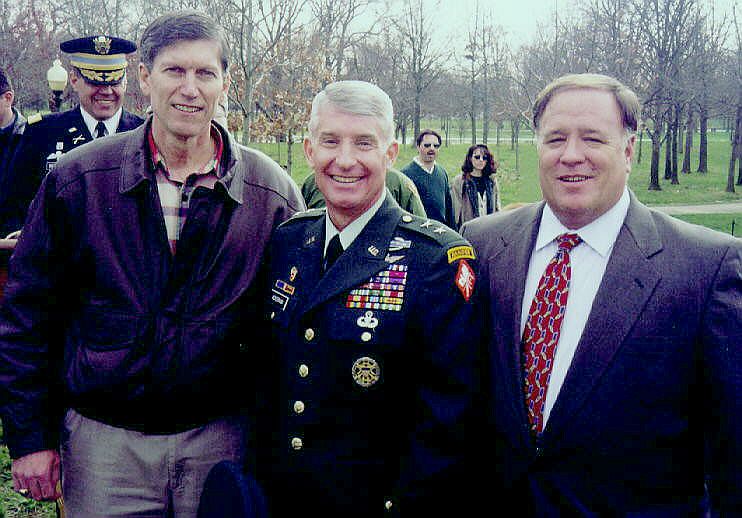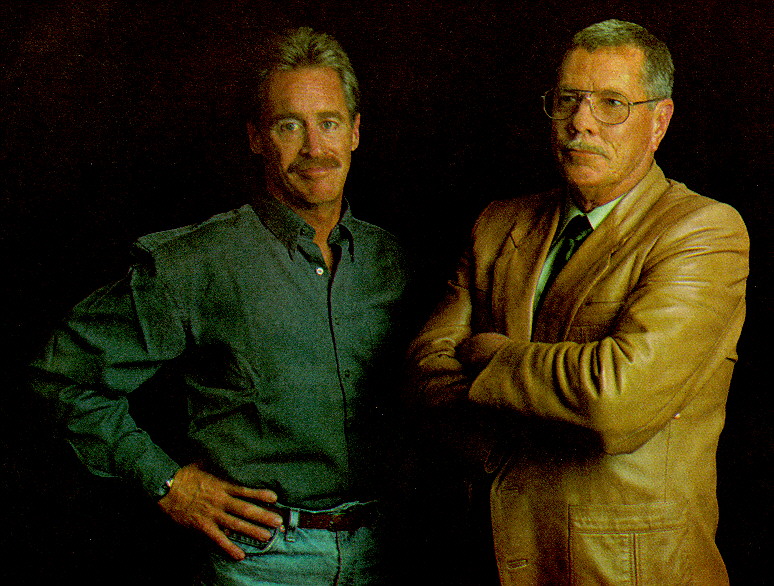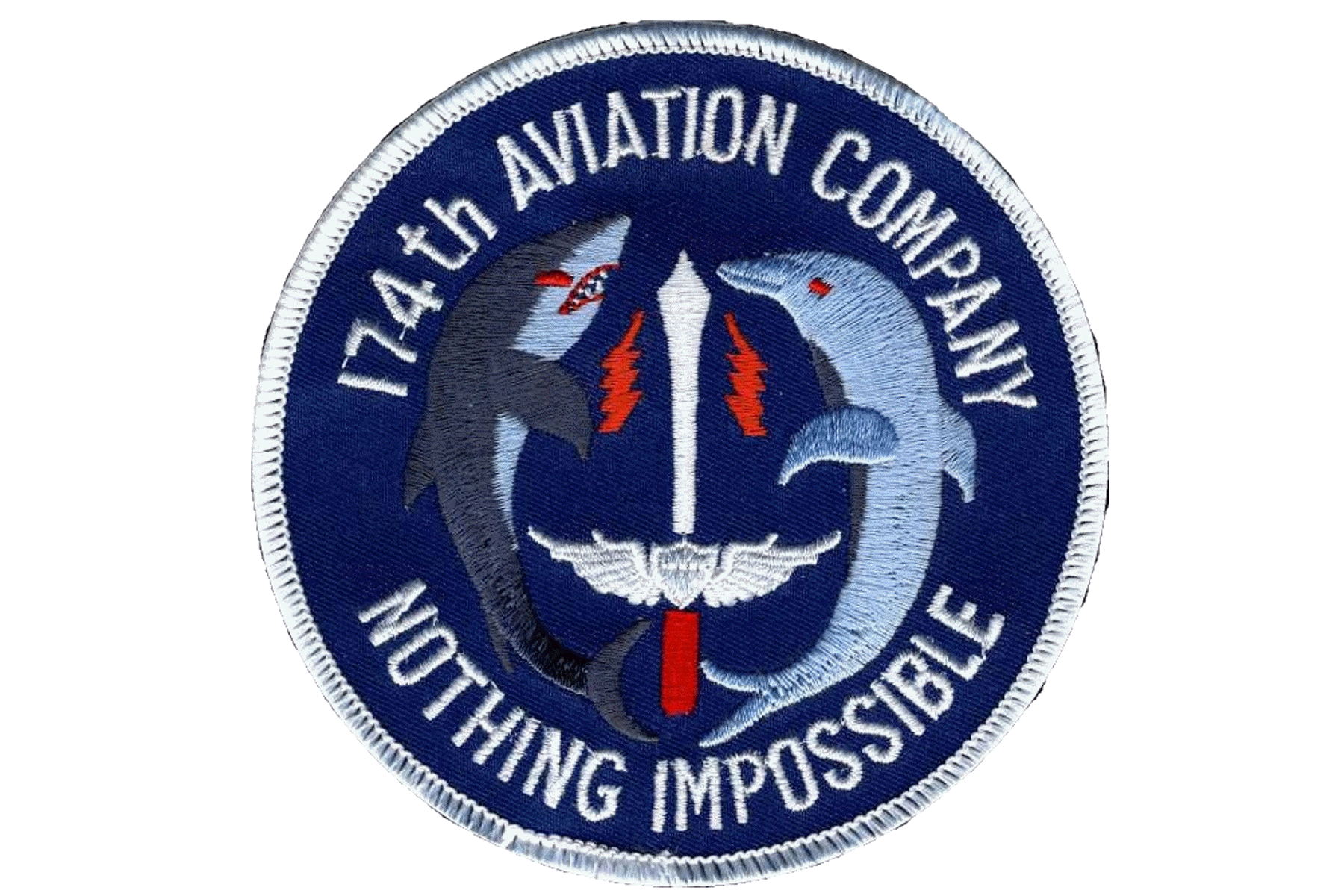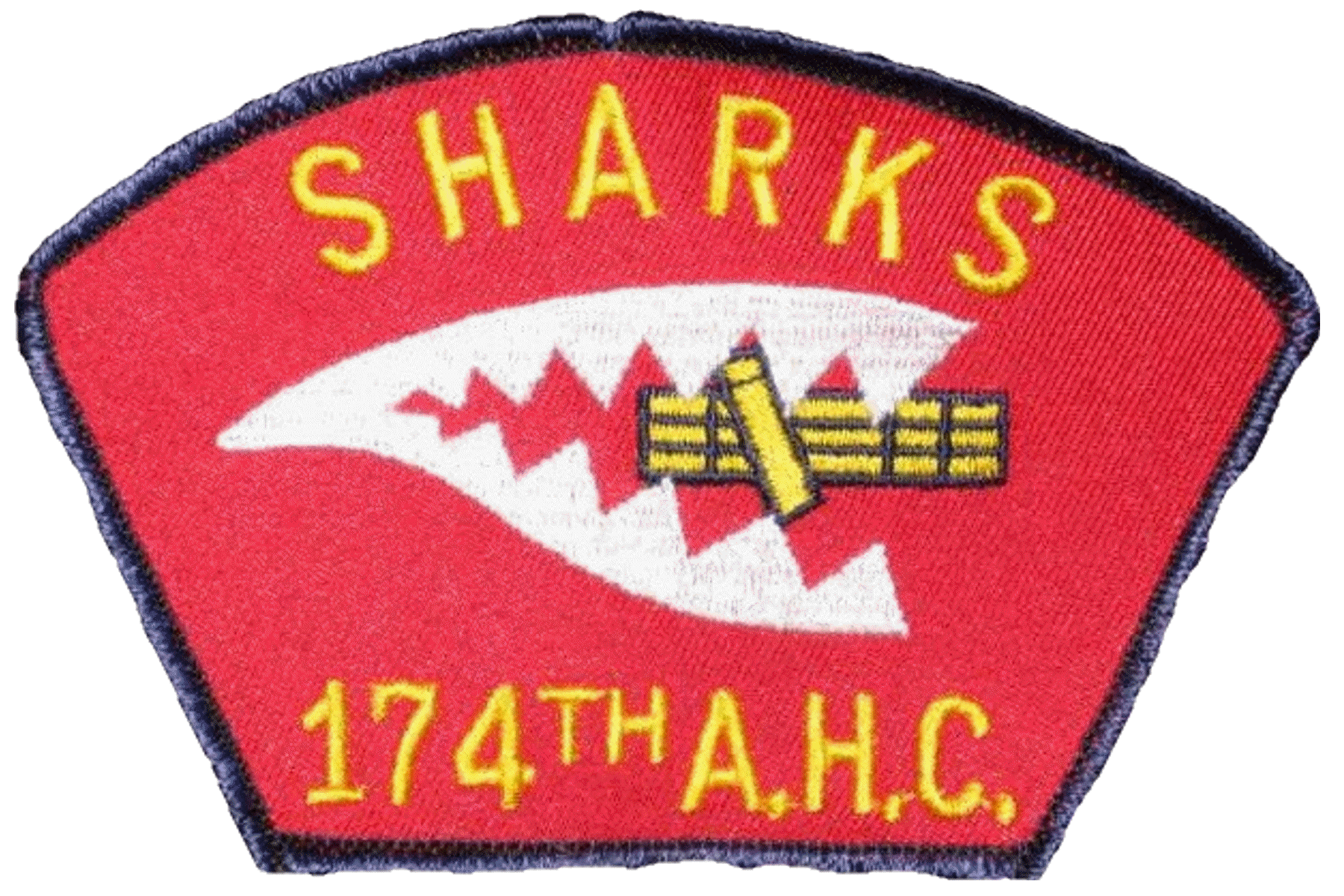174th Assault
Helicopter Company
DOLPHINS & SHARKS
 Click here
Click here  to write us at the website
to write us at the website 
|
|

My Lai Medal Ceremony |
Larry Colburn, below left, and Hugh Thompson reunite March 5, 1998, the night before they were awarded the Soldier's Medals for heroic actions that saved civilians from being killed by American soldiers in My Lai, Vietnam, in 1968. |

I would like to close with a quote that Winston Churchill made during the early days of World War II. He said, "God, grant me that my principal men be men of principle." On the 16th of March, 1968, there were men of principle present. Their names were Hugh Thompson, Lawrence Colburn and Glenn Andreotta. Please publish the order so we may formally present these awards. ANNOUNCER: The Soldier's Medal is awarded to Mr. Hugh C. Thompson, Jr. for heroism above and beyond the call of duty on 16 March, 1968, while saving the lives of at least ten Vietnamese civilians during the unlawful massacre of noncombatants by American forces at My Lai, Quang Ngai Province, South Vietnam. Ward Officer Thompson landed his helicopter in the line of fire between Vietnamese civilians and pursuing American ground troops to prevent their murder. He then personally confronted the leader of the American ground troops and was prepared to open fire on those American troops should they fire upon the civilians. Warrant Officer Thompson, at the risk of his own personal safety, went forward of the American lines and coaxed the Vietnamese civilians out of the bunker to enable their evacuation, leaving the area after requesting and overseeing the civilians air evacuation. His crew spotted movement in ditch filled with bodies of south of My Lay Province. Warrant Officer Thompson again landed his helicopter and covered his crew as they retrieved a wounded child from the pile of bodies. He then flew the child to the safety of a hospital Quang Ngai. Warrant Office Thompson relayed reports of the massacre and subsequent report to his section leader and commander resulted in an order for the cease-fire at My Lai and an end to the killing of innocent civilians. Warrant Officer Thompson's heroism exemplified the highest standards of personal courage and ethical conduct, reflecting distinct credit upon him and the United States Army. Signed, Togo D. West, Jr., Secretary of the Army. (APPLAUSE) The Soldier's Medal is awarded to Mr. Lawrence Colburn for heroic performance on march 16, 1968 in saving the lives of at least ten Vietnamese civilians during the unlawful massacre of noncombatants by American forces at My Lai, Quang Ngai Province, South Vietnam. Specialist Colburn was serving as a door gunner on a helicopter which landed in the line of fire between American ground troops and fleeing Vietnamese civilians to prevent their murder. Specialist Colburn, at the risk of his personal safety, provided cover for the pilot as he went forward of the American lines and confronted the leader of the American forces, and subsequently coaxed the Vietnamese civilians out of a bunker to enable their evacuation. Later, as the helicopter was lifting off after seeing the evacuation of the Vietnamese civilians, Specialist Colburn spotted movement in a ditch filled with bodies south of the My Lai four. The helicopter again landed, and Specialist Colburn, assisted by the crew chief, retrieved a wounded child from the pile of bodies. The child was then flown to the safety of a hospital at Quang Ngai. Specialist Colburn's efforts resulted in an order for the cease- fire at My Lai and an end to the killing of innocent civilians. Specialist Colburn's heroism exemplifies the highest standards of personal courage and ethical conduct, reflecting distinct credit upon him and the United States Army. Signed, Togo D. West, Jr., Secretary of the Army. (APPLAUSE) Please be seated. Ladies and gentlemen, Mr. Thompson. HUGH C. THOMPSON, SOLDIER'S MEDAL RECIPIENT: Fellow veterans, distinguished quests and friends, thank you all very much. I'd like to start off by thanking the United States Army for seeing fit to present me with this award. I proudly and humbly accept it, not only for myself, but for all the men who served their country with honor on the battlefields of Southeast Asia. And I -- excuse me -- and I see many of those brave men in the audience today. Welcome home. I would like to thank my gunner, Larry Colburn, who is up here with me today. Thanks for all the support while we were in Vietnam. Thanks for getting me back home safe. I'd like to thank my mother, Wesley (ph) Thompson, who is back home in Lafayette, Louisiana, and my late father for all their love and nurturing all these years and for laying the ethical and moral foundation that served me well all through my life. I'd like to thank my crew chief, Glenn Andreotta, who was at My Lai with us that day. He alone helped save civilians from a ditch. He then died for his country later in Vietnam. I'd also like to thank his mother, Mrs. Andreotta, who gave up such a fine son and who today still feels the heartache of the loss of her son. I'd like to thank Professor David Eagen (ph) from Anderson, South Carolina, who was on a crusade for 10 years to have the Army award this medal. I promise you, this day would not have been possible were it not for his efforts. Thanks also to Lieutenant Colonel Kevin Klinits (ph), who played a key role in moving this medal through channel. I especially would like to thank Mona, who had stood by me for the last 14 years during very high times and also very low times. And finally, I'd like to recognize all Vietnam veterans who are alive today all across America, and especially to those who are on the wall right out to the left. And I'd like to thank all of them who served their country with honor. In a very real sense this medal is for you. Thank you and God bless you. Again, to my fellow veterans, welcome home. Thank you. (APPLAUSE) ANNOUNCER: Ladies and gentlemen, Mr. Colburn. LAWRENCE COLBURN, SOLDIER'S MEDAL RECIPIENT: Good afternoon. Thank you, everyone, for attending. I'd like to acknowledge the Andreotta family for their sacrifice; my family for their love and support; Hugh Thompson for his courage and loyalty to his crew; Professor David Eagen, who worked relentlessly on this project; Colonel Daniel Gibson (ph), who was instrumental in this award. It's my solemn wish that we all never forget the tragedy and the brutality of war. And I'd like to quote General Douglas MacArthur: "The soldier, be he friend or foe, is charged with the protection of the weak and the unarmed. It's his very existence for being." Thank you all very, very much. (APPLAUSE) ANNOUNCER: Ladies and gentlemen, please stand for the official song of the United States Army. (MUSIC) ANNOUNCER: Ladies and gentlemen, this includes today's ceremony. Please feel free to congratulate the award recipients. Thank you for your attendance... WATERS: An overcast and highly emotional day at the Vietnam Veterans War Memorial and the awarding of the Soldier's Medal to those two men. And, Bruce Morton, the reference to David Eagen, who Mr. Colburn said worked relentlessly on this project indicates how difficult it was getting these Soldier's Medals awarded even 30 years later. MORTON: Lou, there's always been an element -- excuse me -- of cover-up in this. They were awarded medals back in 1968, not very long after My Lai. But Thompson, the helicopter pilot, got the distinguished Flying Cross. His two crewmen got the Bronze star. Those are medals you normally get for action against the enemy. And the citations back then read as if they had been in a fight involving American troops and Viet-Cong troops, which, of course, was not the case. The Soldier's Medal, which they got today, is the highest award the U.S. Army can give for bravery which does not involve conflict with the enemy. And, of course, the conflict here was with Lieutenant Calley and the platoon. Thompson aimed his helicopter door guns at Calley and the platoon, and said, if they interfere with me, shoot them. WATERS: And you would almost have to wait a generation before you could close the book on a story like this? MORTON: I think so. It's very hard closure. It's taken a very long time. And I think that's part of what Thompson meant when he said welcome home. WATERS: Bruce Morton in Washington. We'll take a break and we'll be right back. All Rights Reserved |
 Click here
Click here  to write us at the website
to write us at the website 
![]() Return to top of: Recent
Photographs page.
Return to top of: Recent
Photographs page.
![]() Return to top of: Home Page.
Return to top of: Home Page.

